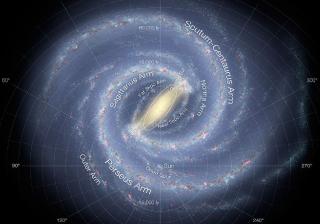Bibcode
López-Corredoira, M.; Sylos Labini, F.; Betancort-Rijo, J. E.
Referencia bibliográfica
Astronomy and Astrophysics, Volume 513, id.A3
Fecha de publicación:
4
2010
Revista
Número de citas
26
Número de citas referidas
25
Descripción
Aims: Several authors have claimed to detect a significant
cross-correlation between microwave WMAP anisotropies and the SDSS
galaxy distribution. We repeat these analyses to determine the different
cross-correlation uncertainties caused by re-sampling errors and
field-to-field fluctuations. The first type of error concerns
overlapping sky regions, while the second type concerns non-overlapping
sky regions. Methods: To measure the re-sampling errors, we use
bootstrap and jack-knife techniques. For the field-to-field
fluctuations, we use three methods: 1) evaluation of the dispersion in
the cross-correlation when correlating separated regions of WMAP with
the original region of SDSS; 2) use of mock Monte Carlo WMAP maps; 3) a
new method (developed in this article), which measures the error as a
function of the integral of the product of the self-correlations for
each map. Results: The average cross-correlation for b > 30
deg is significantly stronger than the re-sampling errors - both the
jack-knife and bootstrap techniques provide similar results - but it is
of the order of the field-to-field fluctuations. This is confirmed by
the cross-correlation between anisotropies and galaxies in more than the
half of the sample being null within re-sampling errors.
Conclusions: Re-sampling methods underestimate the errors.
Field-to-field fluctuations dominate the detected signals. The ratio of
signal to re-sampling errors is larger than unity in a way that strongly
depends on the selected sky region. We therefore conclude that there is
no evidence yet of a significant detection of the integrated Sachs-Wolfe
(ISW) effect. Hence, the value of Ω_Λ ≈ 0.8 obtained by
the authors who assumed they were observing the ISW effect would appear
to have originated from noise analysis.
Proyectos relacionados

Morfología y dinámica de la Vía Láctea
El Proyecto se estructura en dos partes, diferenciadas pero complementarias: morfología y dinámica. El estudio detallado de la morfología de la Vía Láctea pretende proveer una base de datos de distribución estelar en las regiones más alejadas y extintas de nuestra Galaxia, mediante el desarrollo de modelos semiempíricos a partir de la información
Martín
López Corredoira